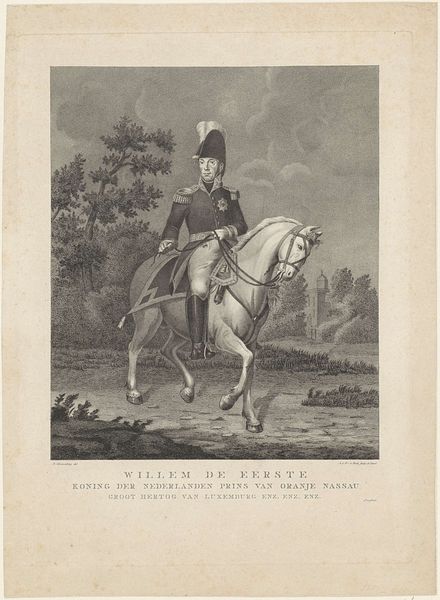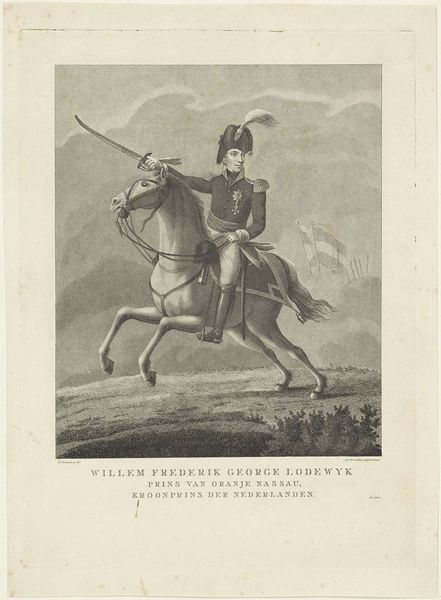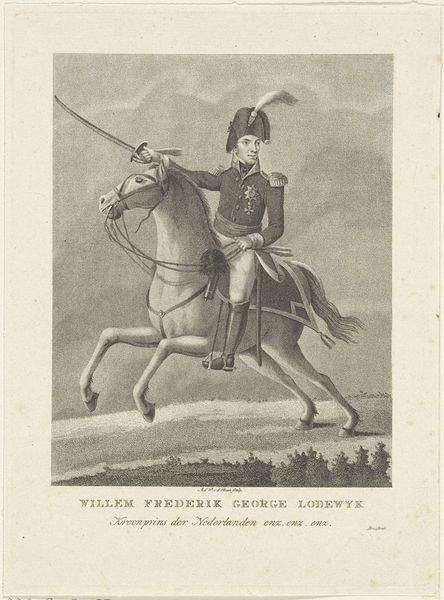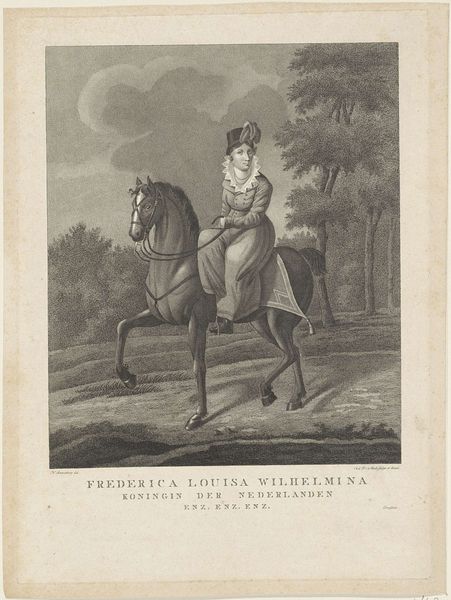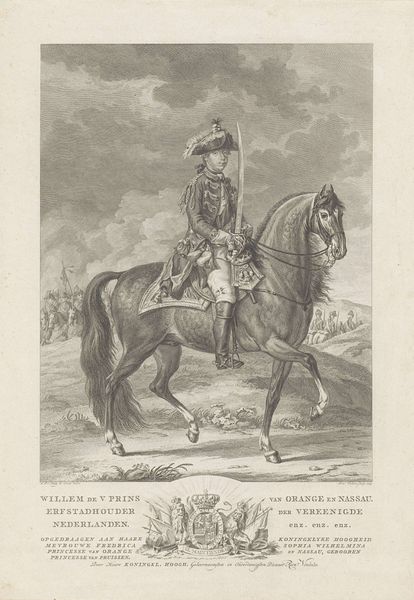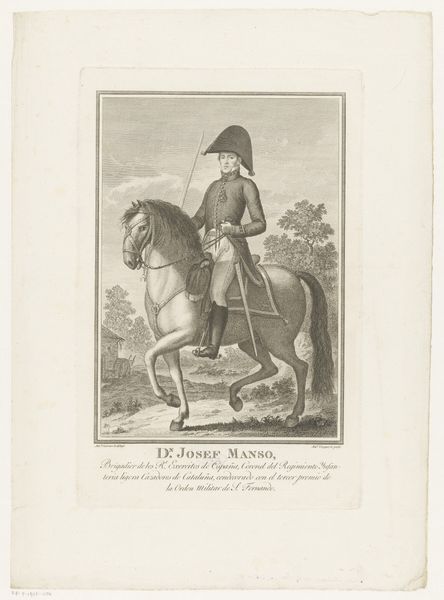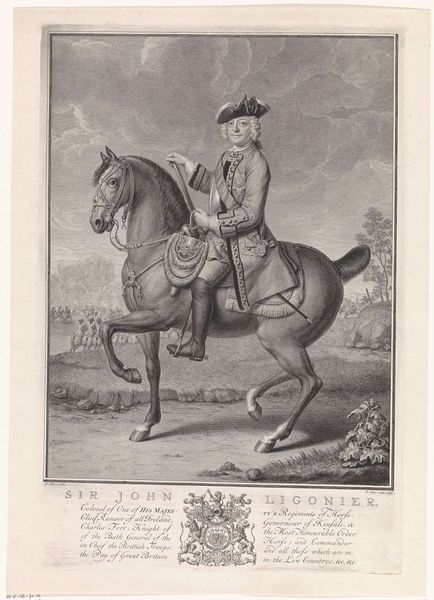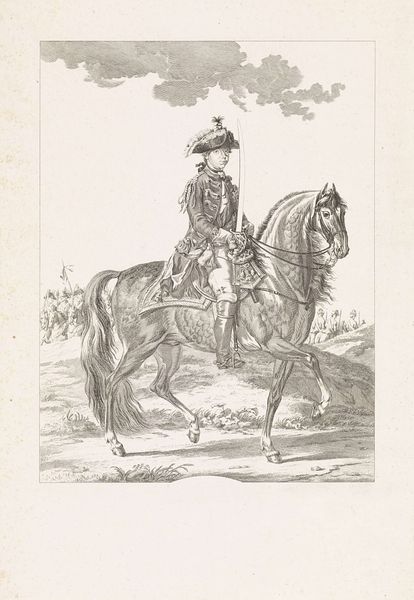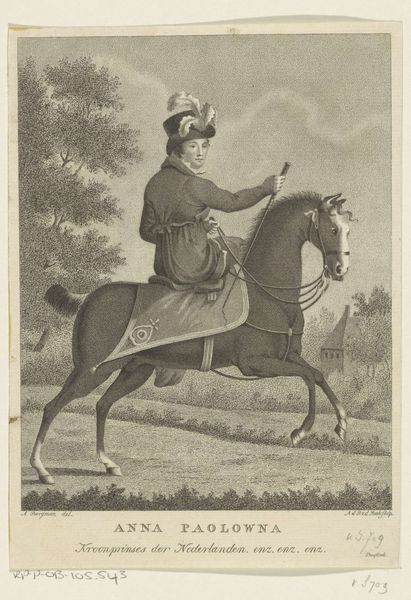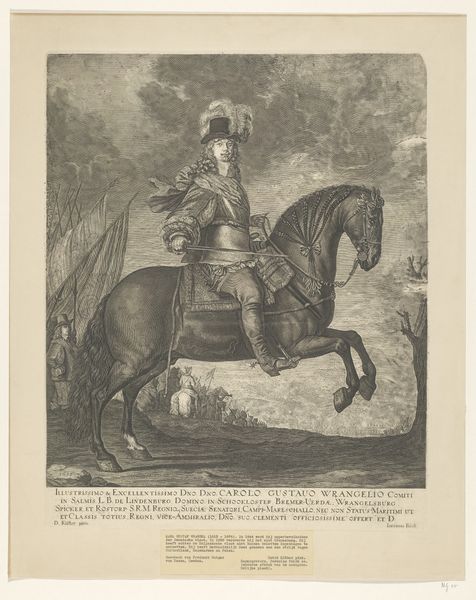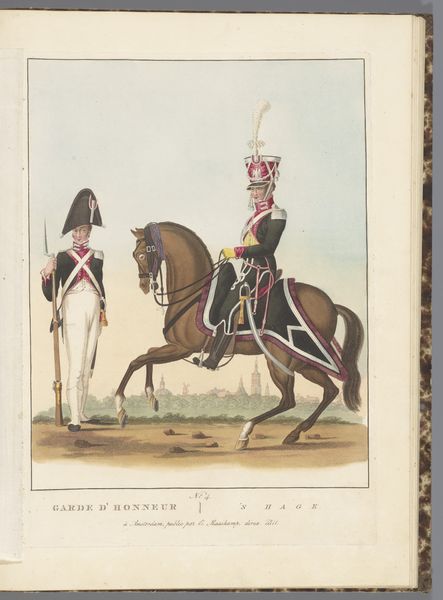
Ruiterportret van Willem I Frederik, koning der Nederlanden 1815 - 1821
0:00
0:00
print, engraving
#
portrait
#
neoclacissism
# print
#
history-painting
#
academic-art
#
engraving
#
realism
Dimensions: height 238 mm, width 174 mm
Copyright: Rijks Museum: Open Domain
Editor: So this engraving by Antonie and Pieter van der Beek, titled “Equestrian Portrait of William I Frederick, King of the Netherlands,” was made sometime between 1815 and 1821. The king looks rather stern. I’m curious, what can you tell me about the social and historical context surrounding its creation? Curator: It's interesting to note the deliberate staging in this portrait. Consider its public role: it was produced during a pivotal period for the Netherlands, immediately following the Napoleonic era and the establishment of the Kingdom. This image very deliberately evokes the authority and legitimacy of the newly instated monarchy. Editor: How does the medium - this engraving - affect the way we might understand it today? Curator: Precisely! The choice of engraving is significant. It was a readily reproducible medium, allowing for wide dissemination of the King's image. In other words, engravings like this played a crucial role in image-building, circulating power symbolically at a crucial juncture in Dutch history. Can you see other strategies or visual cues suggesting that? Editor: Yes, he is on horseback like a classical hero, but at the same time, his gaze and stern expression could be there to show how seriously he took his role as a king. Do you think his expression reflects that? Curator: That's a great point. How else do you interpret that sober face and stiff posture? This isn’t just a representation of an individual but of an ideal, of national stability being shaped in the wake of dramatic shifts in the political order. Editor: It’s really amazing how much these deliberate artistic choices reflect the complex sociopolitical moment in the early Kingdom of the Netherlands. Curator: Indeed. These works highlight how visual imagery could function to communicate messages about power, governance and national identity during a critical period of nation-building.
Comments
No comments
Be the first to comment and join the conversation on the ultimate creative platform.
